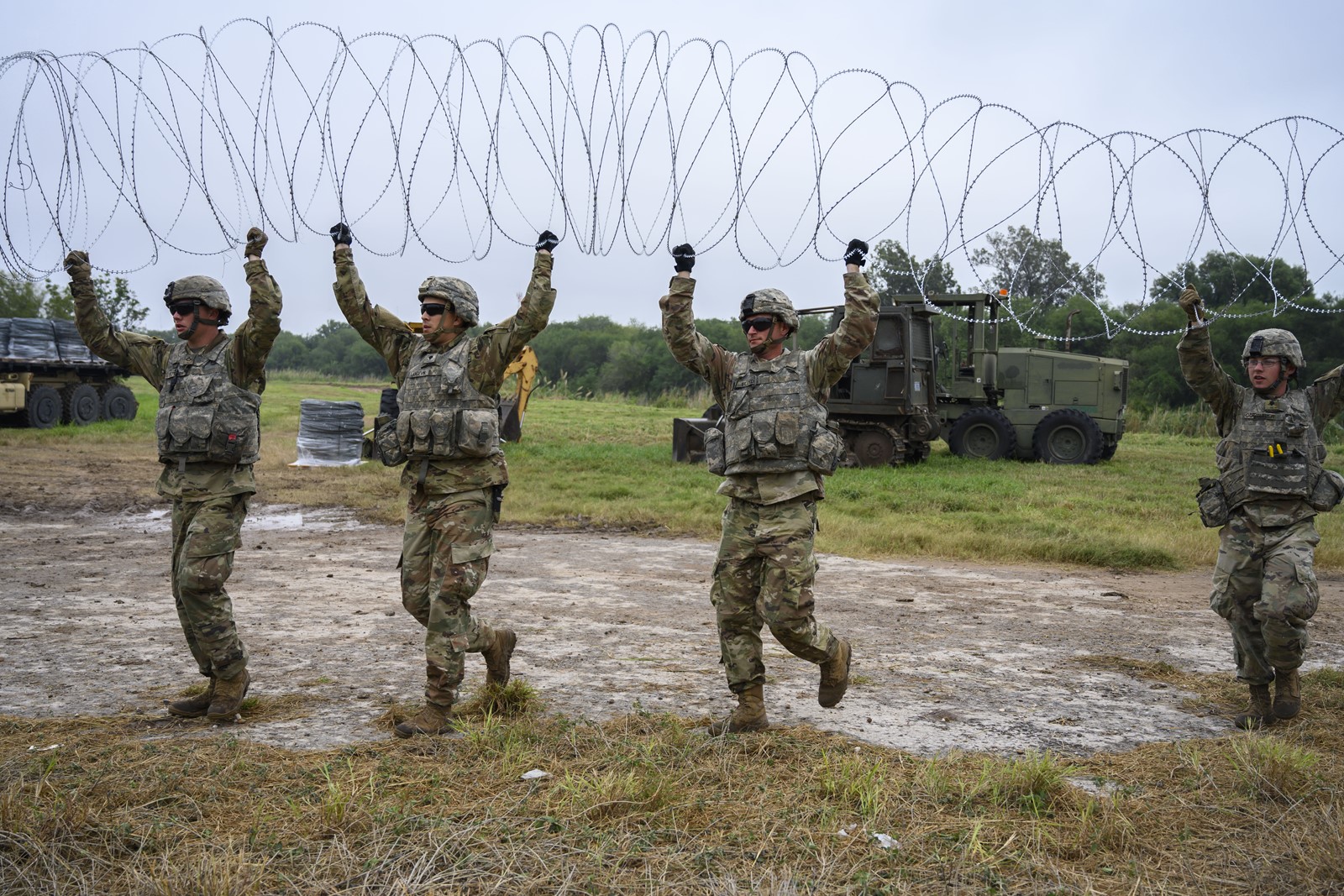What will happen to all that wire?
Border residents want to know when it will come down

In town after town, the scene was much the same: U.S. troops arrived in groups of a few dozen, hauled wooden pallets stacked with barbed concertina off trucks and got to work.
They welded the wire to 20-foot fences in Arizona, strung it on the sunny beaches of San Diego, and tied some to the fences in Brownsville, Texas, that separate the winding Rio Grande from parking lots for stores such as Ross and Dollar General.
Now, nearly a month into the Trump administration’s deployment of thousands of service members to the southern border, some residents are beginning to wonder: What will happen to all of that wire?
Soldiers and Marines unfurled the razor-tipped steel coils at the request of U.S. Customs and Border Protection to “harden” ports of entry as caravans of migrants made their way north. The agency said it was concerned that large groups of migrants might rush the border at once.
But with the caravan groups choosing to travel to Tijuana, near California, officials in other states are awaiting word on whether the U.S. government will remove the wire in their jurisdictions.
“There are women and children, and they’re out there putting up that sharp wire,” said Judge Ramon Garcia, the chief administrative officer in Hidalgo County, Texas, which passed a resolution opposing “permanent” militarization of the border. “I don’t believe that’s going to stop anybody, and it sends a horrible message to our neighbors to the south.”
President Donald Trump has praised the use of the wire, saying just ahead of the midterm elections that when used properly, it can be “a beautiful sight.”
More than 150 miles of concertina were available to be strung at the outset of the operation, said Air Force Gen. Terrence O’Shaughnessy, who has led the deployment as the chief of U.S. Northern Command. It’s unclear exactly how much of it has been used, but certainly dozens of miles. Northcom said in a tweet last week that U.S. troops had strung more than 20 miles of wire in just the previous few days.
During Defense Secretary Jim Mattis’ visit to troops in South Texas, a soldier asked whether he and his colleagues would have to remove the “wire obstacles” they had put in place. Mattis, who was traveling with Homeland Security Secretary Kirstjen Nielsen, wouldn’t say.
“We’ll see what the secretary says, ” Mattis responded, referring to Nielsen. “Right now, the mission is to put them in. We’ll let you know.”
U.S. military officials initially said they expected the mission to conclude by Dec. 15, though the possibility of an extension remains. Mattis told reporters Nov. 21 that the end of the deployment will be “conditions-dependent,” and “some” of the deployed troops will be home by Christmas, depending on whether Homeland Security assigns them any more missions.
On Monday, Northcom said in a statement that it had cut the number of troops on the border mission in Texas from 2,800 to 2,400 and the number in Arizona from 1,500 to 1,400, an indication that work there is beginning to wane. The number of troops in California, meanwhile, has jumped from about 1,500 to 1,800, as the government continues to look for ways to fortify the border near the caravan.
As of Wednesday, DHS has not asked the Pentagon to change its deployment plans, said Lt. Col. Jamie Davis, a military spokesman.
The Pentagon said last week that it expects the deployment to cost about $72 million, and that figure could rise.
The wire has been installed in some areas where security measures meet civilian life. And it also has raised concerns about wildlife, which can become ensnared in the wire’s sharp teeth.
In Laredo, Texas, concertina was strung in Tres Laredos Park, drawing lamentations from some city officials. A Border Patrol chief, Greg Burwell, told the city council on Monday that when the wire is no longer needed, the Border Patrol will ask the U.S. military to remove it, according to the Laredo Morning Times.
Roberto Balli, a city councilman concerned about the issue, has doubts about whether that promise will be kept.
“I think our community has respected what Border Patrol does,” Balli said in a phone interview. “But the issue with the wire — I think the threat appears to have ended. I think it’s probably time for that wire to come down so that our community can continue as it has always been.”
Asked about Burwell’s comments, CBP said in a statement that it “has no plans to remove any impedimentary materials/equipment installed at and between the Ports of Entry.” That marks a difference from earlier this month, when CBP said in another statement to The Washington Post that it would reassess the need for the wire once the potential for a migrant caravan in South Texas disappeared.
The issue is complicated by the possibility for additional migrant caravans to travel to other parts of the U.S. border where the wire is now. South Texas was selected as a good spot for additional concertina wire initially because it was a shorter journey for migrants traveling north. Other border cities, such as El Paso, are farther north and have not received similar reinforcements.


 PREVIOUS ARTICLE
PREVIOUS ARTICLE
